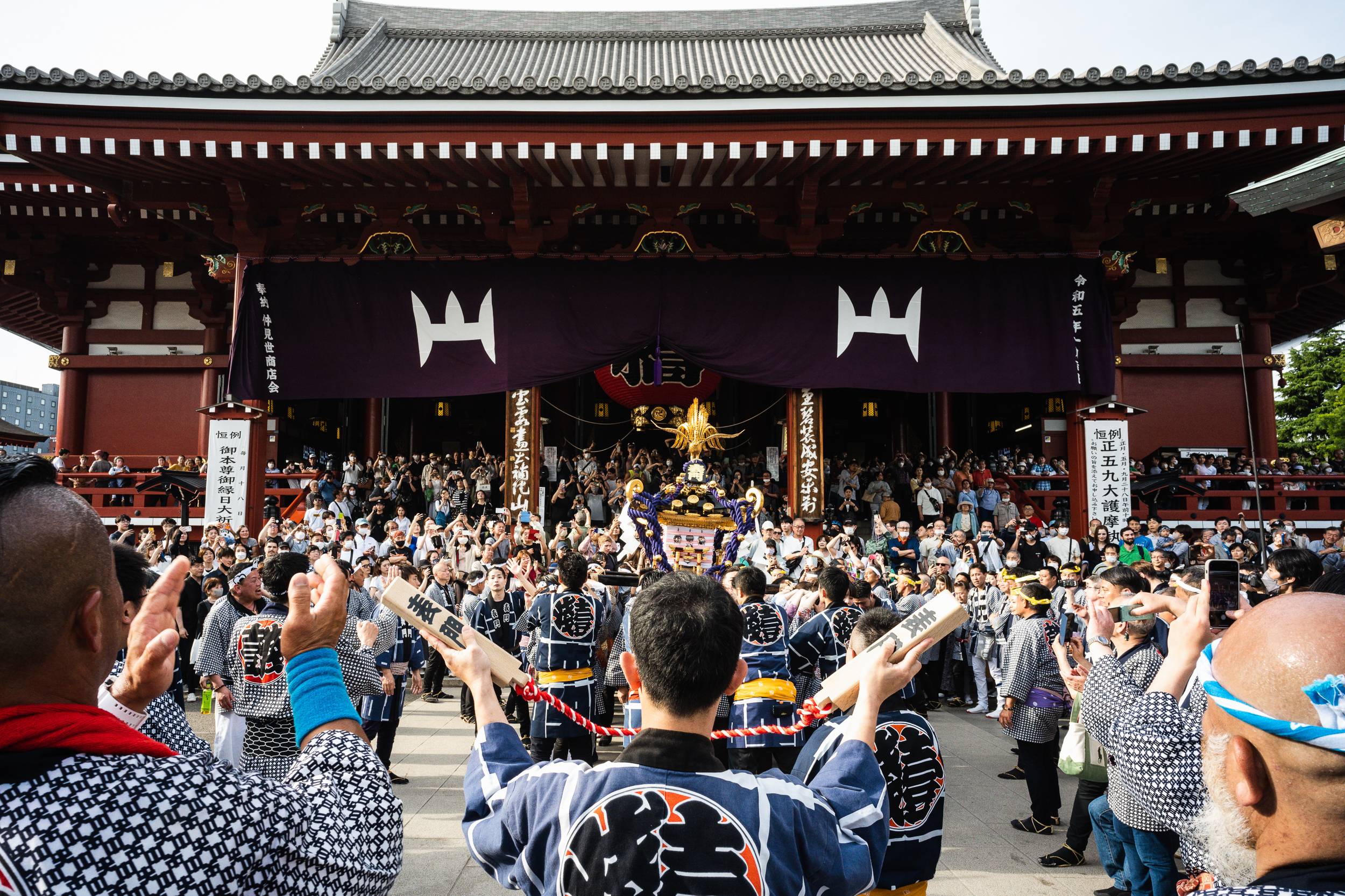Last week, the Sanja Matsuri returned to Tokyo in full for the first time since the COVID-19 pandemic began in 2020. And the excitement that was on display may be a preview of the type of summer that is headed our way as festivals — traditional and modern — return to form.
The Japanese word, “matsuri,” means “festival” in English, but sometimes it feels like the translation doesn’t do the original justice. Matsuri are steeped in tradition and history, and the Sanja Matsuri is known as one of Tokyo’s three biggest — the other two being the Sanno and Kanda festivals. The Sanja Matsuri honors the three men who founded Sensoji temple: Hinokuma Hamanari, Hinokuma Takenari and Hajino Nakamoto.
Sanja is known for its intensity. Attending last year, I can remember onlookers kept at a distance from the portable mikoshi shrines being wheeled down the street — masks in place and held back by police. This year? It was masks off and revelers were able to get their shoulders under the mikoshi to help transport them between Sensoji and Asakusa Shrine. A purported 2 million people were said to have attended the event at some point over its three days.



















With your current subscription plan you can comment on stories. However, before writing your first comment, please create a display name in the Profile section of your subscriber account page.